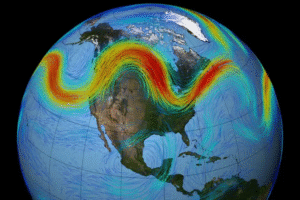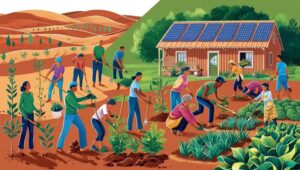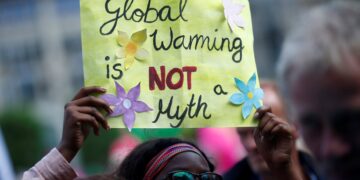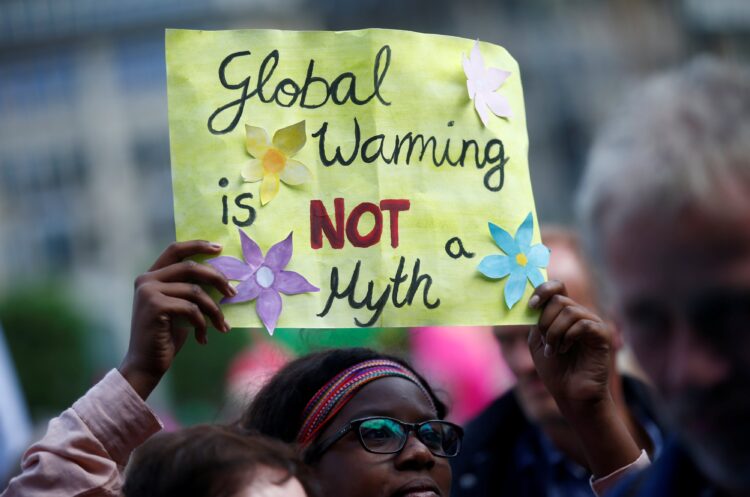OPINION
As the world grapples with escalating climate shocks from prolonged droughts to devastating floods and heat waves one truth is becoming clearer: solutions must rise from the ground up. And at the heart of these solutions is a powerful force often underestimated youth leadership. From disrupted education due to floods, to rising food insecurity, to worsening unemployment caused by failed harvests and energy instability, today’s youth are living on the front lines of a crisis they did not create.
Furthermore, the recurring droughts are threatening the future of farming communities where many young people depend on agriculture for survival. In coastal areas, rising sea levels are displacing families and eroding opportunities. Urban youth are breathing in toxic air from industries and rotting wastes navigating floods in poorly planned neighborhoods. Mental health challenges, climate anxiety, and uncertainty about the future have become part of youth identity in the age of climate change.
 Additionally, In communities across Africa, Asia, and Latin America, young people are stepping up not just as climate activists, but as innovators and problem-solvers, designing practical solutions rooted in local knowledge. Their work is proving that climate resilience doesn’t always come from billion-dollar projects. Sometimes, it comes from a youth-led community composting initiative, a solar-powered water pump, or a mobile app that alerts farmers to changing weather patterns.
Additionally, In communities across Africa, Asia, and Latin America, young people are stepping up not just as climate activists, but as innovators and problem-solvers, designing practical solutions rooted in local knowledge. Their work is proving that climate resilience doesn’t always come from billion-dollar projects. Sometimes, it comes from a youth-led community composting initiative, a solar-powered water pump, or a mobile app that alerts farmers to changing weather patterns.
Grassroots innovations are uniquely positioned to reduce climate vulnerability because they are locally relevant, cheap, and community-driven. Unlike the strategic interventions, these solutions understand the ground, the people, and the socio-economic challenges. For example, in Uganda, youth-led groups are restoring degraded wetlands through tree planting and agroforestry while providing green jobs to unemployed youth through making and training of organic fertilizers and eco briquettes from agricultural waste as the alternative to firewood and also preventing deforestation.
And what makes these efforts transformative is not just the innovation itself, but the process behind it youth engagement, community ownership, and inclusive leadership. Young people are not waiting for permission. They are mobilizing peers, educating communities, and building networks of resilience from the grassroots through school clubs, digital platforms, and youth cooperatives, they are shifting climate action from the conference halls to the front lines of real life.
Technology is another level that youth are leveraging on fully. With the available resources such as smartphones in hand, they are developing apps for climate-smart agriculture and creating digital campaigns that spread awareness at lightning speed. These tools are making climate information more accessible and adaptation strategies more effective.
The most powerful innovation youth bring to the climate fight is hope that is rooted in action. They are not paralysed by the scale of the crisis. Instead, they are planting seeds literally and symbolically for a better future. And their work is not just reducing climate risks today but preparing communities to withstand and thrive despite the uncertainties of tomorrow.
 The call to action now is Governments and development agencies must move beyond symbolic inclusion and instead fund, mentor, and trust youth to lead. Climate adaptation and resilience cannot be achieved without those who are already living and innovating through its toughest impacts.
The call to action now is Governments and development agencies must move beyond symbolic inclusion and instead fund, mentor, and trust youth to lead. Climate adaptation and resilience cannot be achieved without those who are already living and innovating through its toughest impacts.
Moreso Governments should prioritize in investing in education and training programs for youth to equip the workforce with skills required for the emerging green energy sector.
In conclusion, the climate crisis has robbed many young people of certainty, but it has also awakened a generation of visionaries, inventors, and change-makers. If supported, youth-led grassroots innovations could be the turning point in building a more just and resilient world.
By Shallon Ainembabazi,
The writer is a Programs Officer at WOGEM Uganda
Email: shaciaine@gmail.com







































